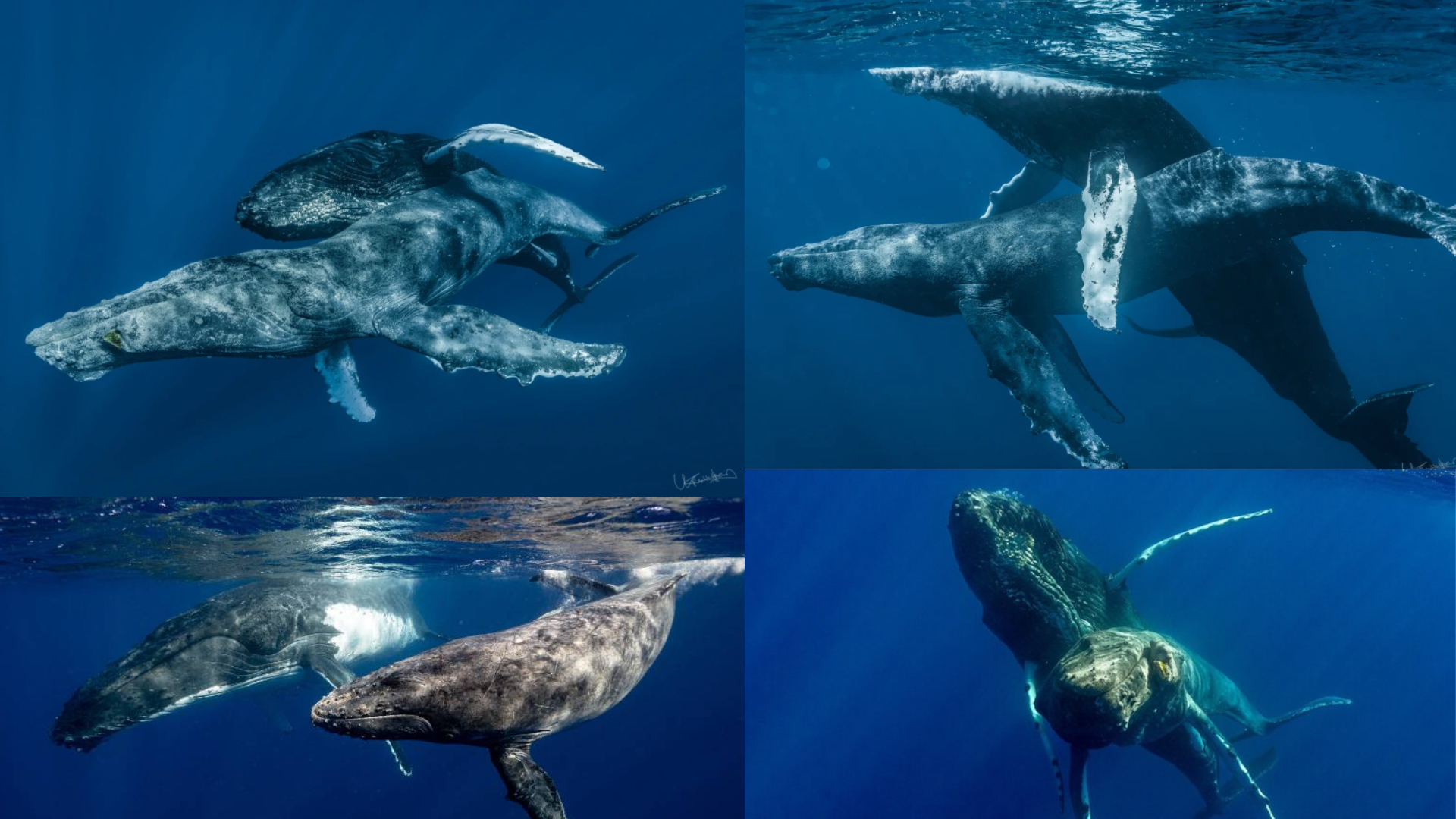










In a positive study, scientists have documented the first experience of homosexuality in humpback whales, challenging long-held beliefs about the animal’s behavior. This remarkable discovery not only adds a new dimension to our understanding of cetacean sexual behavior but also contributes to broader debates about the diversity of sexual behavior across the animal kingdom.
The discovery occurred off the coast in January 2022, Photographers Lyle Krannichfeld and Brandi Romano captured two male humpback whales having sex in Hawaiian whales. The research describing this unprecedented observation was published in the journal Marine Mammal Science and became a landmark in marine biology research.
The humpback whale’s sexual behavior remained a mystery for decades; Male genitalia are rare and no actual sexual behavior has been documented to date. This specimen not only provides the first evidence of sexual behavior in humpback whales but is also one of the few pieces of evidence of homosexual behavior in the species.
Sexual behavior has been observed in many species, as documented in Bruce Bagemihl’s 1999 book Biological Flourishing. There is a wide variety of sexual orientations in the animal kingdom, from dolphins to orcas; It’s hard to imagine such behavior being negative. The latest analysis of humpback whales further highlights the complexity and diversity of animal sex and supports the idea that sex is part of life on Earth.
The encounter described in the study took place in the waters west of Maui, where two whales that appeared to be humans approached and surrounded the boat before engaging in sexual intercourse. The interaction not only provides a rare glimpse into the private lives of these giant animals but also provides insight into their relationships and hierarchies.
One of the whales participating in the encounter appeared to be in poor health, emaciated, and covered in whale lice, suggesting that he may have been less active and more vulnerable than his companions. This observation led the researchers to consider the motivation behind the encounter; This suggested that this non-sexual behavior could serve a variety of relationships, from future reproductive practice to establishing a relationship or maintaining control.
This discovery has important implications for our understanding of humpback whale behavior and the general study of animal sex. It challenges preconceptions about the nature of sexuality in wild animals and opens new avenues for studying relationships and relationships in marine animals.
Photographers Krannichfeld and Romano’s contribution to this exploration highlights the important role of folklore in advancing our understanding of the natural world. Their observational skills and willingness to share their findings with the scientific community gave us rare insight and understanding into the complexity of humpback whale behavior and reminded us that many mysteries are waiting to be discovered deep within our oceans.
studies of animal behavior continue, and discoveries like these underscore the importance of keeping an open mind and supporting the diversity of life in all things. The sex record of two male humpback whales not only adds to our knowledge of these beautiful animals but also contributes to the ongoing debate about differences between the sexes in sexual behavior, which in many ways most encourages love and affection and the expression itself. surprising way.









